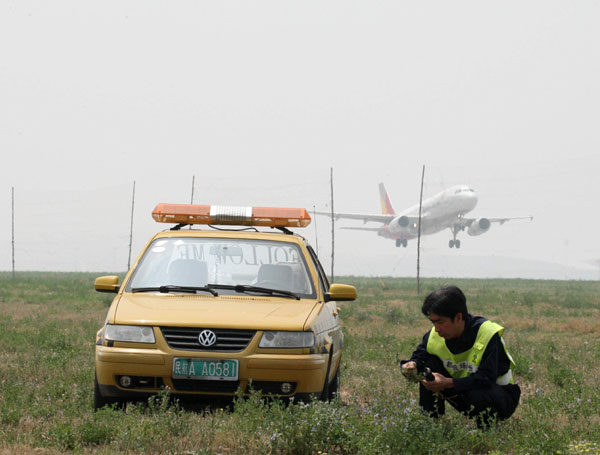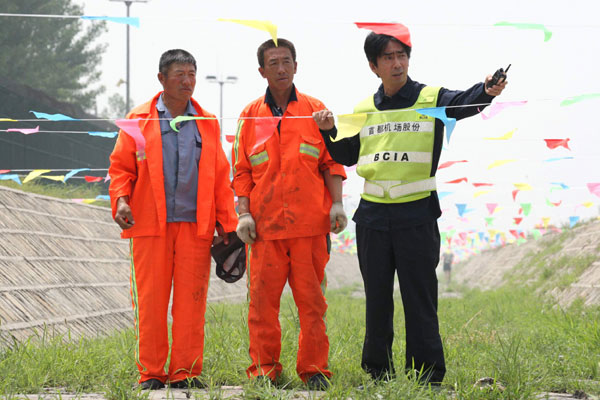

Birds are small but they are a huge threat on the runway. Liu Zhihua gets a peek at how Beijing Capital International Airport controls its bird population.
Dressed in a blue uniform, Sui Guohui, 42, blends into the crowd at the busy Beijing Capital International Airport (BCIA). But his job is critical in ensuring the safety of everyone at the airport, especially those who are getting on airplanes.
 |
|
Sui Guohui examines Beijing Capital International Airport's surroundings to understand why birds arrive and how to keep them away. Photo by Jiang Dong / China Daily |
Sui leads a team of bird population control officers at BCIA, which has one of the world's largest passenger throughputs annually.
"I'm under great pressure every single minute. The task sounds simple, but it is very tricky and important," Sui says.
Birds on the runway are a threat to airplane safety. If they collide with incoming or departing aircraft, they can cause massive structural damages. And an airplane disaster could happen if just one bird enters the engines, Sui explains.
With some 30 of his colleagues, Sui has adopted various methods to prevent bird strikes from happening.
On the grass patches close to runways, there are bird-frightening devices such as automatic bird distress recorders, automatic gas exploders and raptor-like kites, to stop birds from coming close. There is also wire mesh, about 6 meters tall, to block birds from entering the runways.
Farther away, the airport covers gutters surrounding the runways with colorful banners, which function like scarecrows.
 |
|
Sui Guohui leads a team of bird population control officers on a routine patrol. Photo by Jiang Dong / China Daily |
There is also a special team which patrols the runways regularly on vehicles that broadcast sounds to frighten away birds. This team of officers also mow the grass to prevent it from overgrowing and spray pesticides to ward off pests, food for the birds.
"All these are preventive methods to control the birds but there is no guarantee," Sui says.
"People around me know that every time I look unhappy, I must have dreamt of bird strikes the night before."
Sui witnessed his first bird attack on Sept 22, 1997, which is now known as "black Friday" among his colleagues.
It started out as a normal day until a few swallows showed up at the airport at noon.
Without a second thought, the runway maintenance team shot at the birds using guns. During that time, shooting was the method used most at the airport to prevent bird strikes.
The swallows disappeared, to the relief of everyone.
But at about 2 pm, flocks of swallows descended on the airport, as if on a revenge mission.
"We were stunned," Sui says. "The runways were infested with swallows. Up in the air, there were so many birds that they blocked the sun."
Airport workers did all they could to chase the birds away.
Some shot at the birds, some went on cars and trucks to frighten them, and others used brooms, gongs and drums.